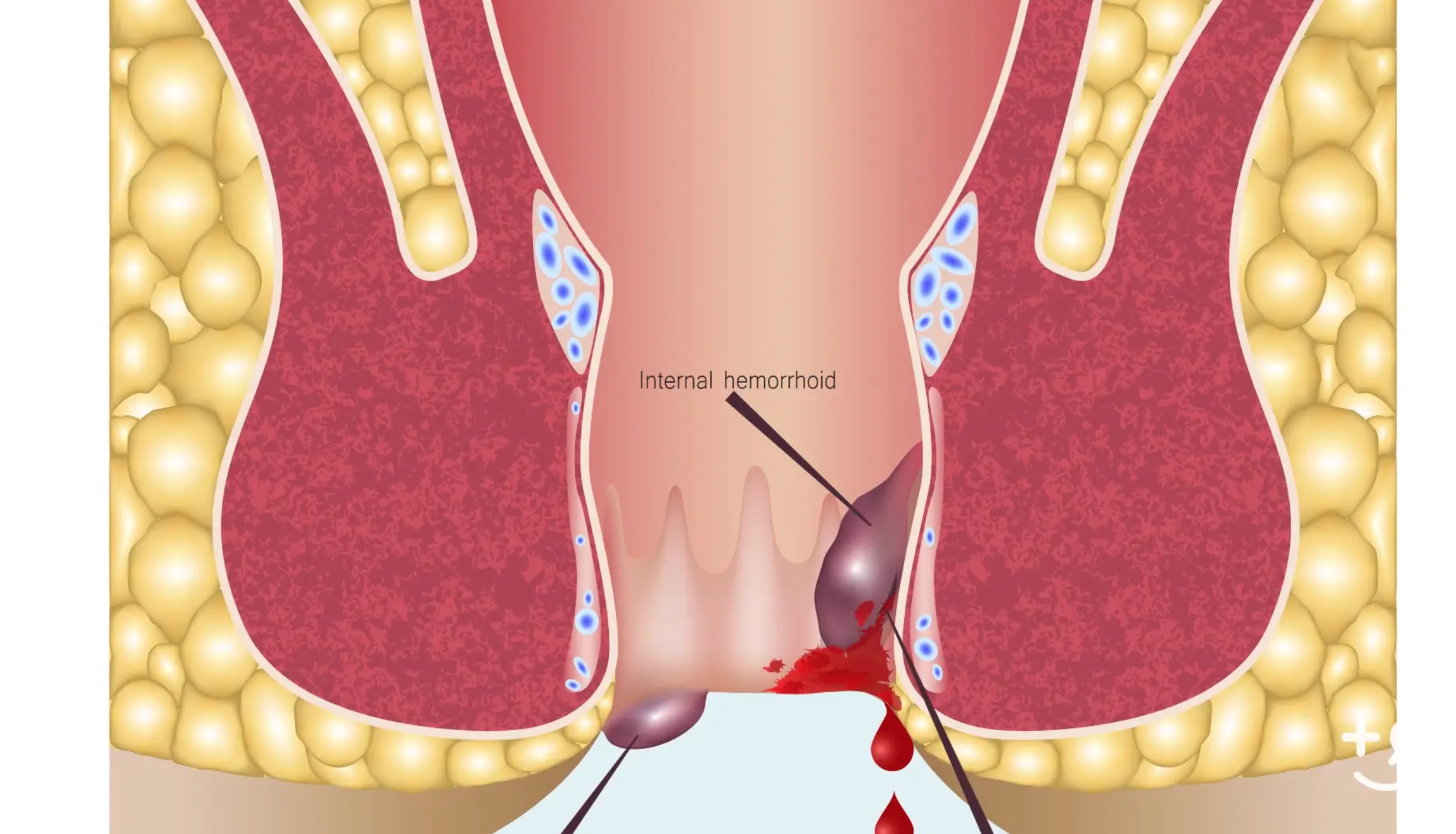Hemorrhoids, commonly also known as piles, is a very common condition.
- Hemorrhoids account for nearly 4 million outpatient and emergency department visits annually in the United States.
- Hemorrhoids are swollen veins in the lower part of the rectum and anus.
- They develop commonly due to straining during bowel movements.
- They can also develop with obesity, a low-fibre diet, regular heavy weight lifting, sitting for prolonged periods, anal intercourse and during pregnancy. Sometimes, the exact cause is unknown.
- Hemorrhoids are of two types – internal and external. Internal hemorrhoids develop when the veins in the rectum swell. External hemorrhoids are a result of swollen veins under the skin of the anus.
- Hemorrhoids can cause irritation when they become inflamed.
- They may also bleed when the walls of the veins become stretched too thin.
- External hemorrhoids can cause itching, discomfort, pain, swelling in the anal opening and bleeding.
- Thrombosis (formation of a blood clot) of an external hemorrhoid causes sudden excruciating pain. The pain occurs with walking, sitting or passing stool.
- Internal hemorrhoids rarely cause discomfort as they lie inside the rectum. Hence, they are usually not visible externally.
- Internal hemorrhoids may cause some discomfort during passage of stool and result in bleeding during bowel movements.
- Straining during a bowel movement can cause an internal hemorrhoid to protrude through the anal opening. This can cause pain.
- Hemorrhoids are treatable and can be managed with medication, lifestyle changes and surgical procedures, if required.
- The risk of developing hemorrhoids increases with age. This is because the tissues in the rectum and anus that support the veins weaken and stretch with age.
- These tissues can also weaken and stretch during pregnancy with the pressure of the baby being placed on the rectum and anus.
- External hemorrhoids can be diagnosed unaided on visual examination. Internal hemorrhoids need a proctoscope or sigmoidoscope for visualization and diagnosis. Internal hemorrhoids are also seen on colonoscopy.
- Complications of hemorrhoids include anemia (due to bleeding), thrombosed hemorrhoid (formation of a blood clot within the hemorrhoid) and strangulated hemorrhoid (when the blood supply is cut off).
- Home remedies can help to relieve pain and discomfort – Eating high-fibre foods helps to soften the stool. Passage of softer stools reduces straining and relieves the discomfort and pain experienced with hemorrhoids.
- Soaking the anal region in warm water for 10-15 minutes two to three times helps to reduce pain and inflammation.
- In case of itching, pads soaked in witch hazel and applied to the hemorrhoids helps to relieve symptoms.
- Medication – Over-the-counter hydrocortisone and lidocaine cream or suppositories can also be used to help with itching. Steroid creams should not be used for more than a week as they can thin the skin making it fragile. Paracetamol, aspirin or ibuprofen temporarily help to relieve pain.
- External thrombosed hemorrhoids are treated either with medication like pain killers and stool softeners. The pain gradually reduces over 2-3 days, with continued improvement as the thrombus (blood clot) is gradually absorbed over several weeks. In case of severe pain from thrombosed hemorrhoids, your doctor can remove the hemorrhoid. This is done under local anesthesia and provides prompt relief. It is most effective when done within 72 hours of developing the clot.
- Minimally invasive procedures are used for persistent bleeding and pain from hemorrhoids. These procedures include rubber band ligation, sclerotherapy (injection of a chemical into the hemorrhoid) and coagulation (laser, infrared light or bipolar) of hemorrhoids. All these procedures shrink hemorrhoids and can be done in the doctor’s office. These procedures do not require anesthesia.
- Only a small percentage of people with hemorrhoids require surgery. Surgery is needed when other procedures are unsuccessful or you have large hemorrhoids. Surgical methods include hemorrhoid stapling and hemorrhoidectomy (hemorrhoid removal). Complications of surgery include bleeding, urine retention, pain and rarely infection leading to sepsis.
How can you prevent hemorrhoids?
- Eat foods high in fibre like whole grains, leafy green vegetables, lentils
- Drink plenty of water
- Do not strain during passing stools
- Go to the toilet as soon as you feel the urge
- Exercising regularly helps to prevent constipation
- Avoid long periods of sitting
- Take fibre supplements if you often have constipation
 Back to Blog Homepage
Back to Blog Homepage
